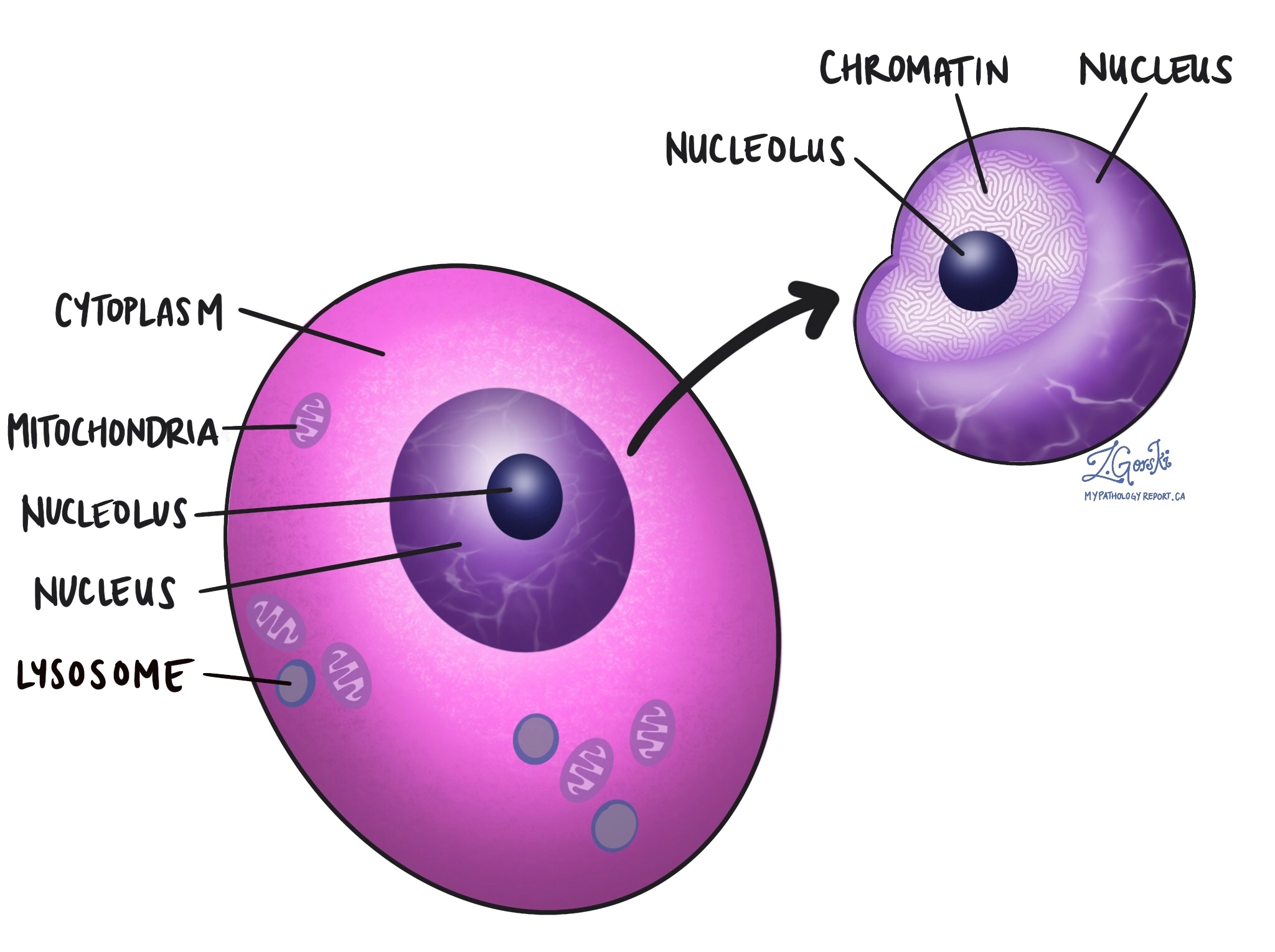
The nucleus (plural: nuclei) is a small, specialized structure found inside almost all cells in your body. It holds most of your genetic material, known as DNA, which acts like a set of instructions controlling how cells function and behave. Within the nucleus, the DNA is organized with proteins into a material called chromatin. Areas of chromatin often cluster together, forming round structures called nucleoli (singular: nucleolus). The nucleus is enclosed by a thin protective layer called the nuclear membrane.
How do pathologists examine the nucleus?
Pathologists examine the nucleus by looking at tissue samples under a microscope. Before viewing, they stain the tissue using special dyes called hematoxylin and eosin (H&E). Hematoxylin specifically stains the nucleus, giving it a distinct blue or purple colour. Using these stains helps pathologists see the nucleus’s shape, size, and details clearly. The nucleus usually appears round or oval in healthy cells with smooth edges.
How does the nucleus change in health and disease?
When pathologists examine cells under the microscope, the appearance of the nucleus gives important clues about the cell’s health and activity. For example, highly active or rapidly growing cells often show one or more prominent nucleoli inside the nucleus. Cancer cells tend to be very active, so their nuclei usually appear darker and larger than normal. Pathologists use the term hyperchromatic to describe nuclei that appear darker due to increased activity or abnormal growth.
Additionally, the shape of the nucleus can indicate whether a cell is healthy or abnormal. Healthy, non-cancerous cells typically have nuclei that look round and smooth. In cancer cells, however, the nuclear membrane often appears irregular, with noticeable folds or bumps. Pathologists call these changes nuclear membrane irregularities, which are common features of many cancers.
Certain infections, especially viral infections, and radiation exposure can also cause distinct changes in the nucleus. In these situations, the nucleus may become significantly larger or appear unusual. When viruses infect cells, pathologists describe the resulting nuclear changes as a viral cytopathic effect. Recognizing these changes helps pathologists identify infections and guide appropriate treatment decisions.



